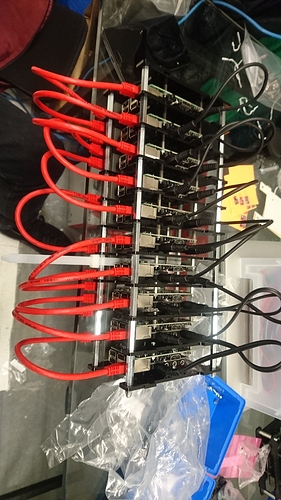Here’s a project I’ve been trying to start for a while now, and kept being hit with hackspace-syndrome whereby I turn up to work on the project, only to find I’ve left a key part of it at home or something doesn’t work 
Problem: I’ve got a bunch of optical media, CDs, DVDs, and I’d like for them to all be available to me without needing the media - so I can actually use the media I own rather than relying on streaming services like Spotify. I don’t have any working CD/DVD drives that can be plugged into a computer easily. I suspect it’s not just me that has this problem.
My solution: Build a machine which takes in optical media and a USB drive, allows you to select what format you’d like the media ripped in, and then when pressing GO it will rip the content to your USB drive. When it’s done, it spits out the optical media and you can either put another one in, or be done. Ideally it’d be standalone so that a) I can leave it going whilst I get on with other things and b) can be set up as an appliance so that when I’m done converting my own content, other people can use it to convert theirs too.
Ideally, it should have the option of ripping the content lossless, or compressed. It should also retain the metadata (for CDs do a lookup from musicbrainz on the ISRC, for DVDs… not sure!).
The build: I’m hoping I can use a Pi Zero as the brains, a Pimoroni Display-o-tron HAT as the UI, and a slot loading DVD drive, hooked up to a SATA to USB enclosure, for the drive. Also have a powered USB hub for dealing with USB drives.
Whilst the Pi Zero might not be any good for transcoding (especially video), perhaps I can ship it out to a cloud service for doing that. Or build my own with ffmpeg and a VPS somewhere.
Also, if the whole ripping thing turns out to be not as useful as I’d like, it could easily be repurposed with different code to do various other things - for example burning backups to DVDs automatically on a schedule. Or something like that.
Ideally I want to build a nice lasercut acrylic enclosure (maybe with light gathering or transparent acrylic, oooh very Blake 7 … just realised I can backronym the name of the project to be ORAC! that’s exciting) to hold it all together. (I’ll need to do the laser cutting induction for that first, of course).


 I have the outline for cutting if you want, was pretty much carbon copied from a design I bought online at modmypi
I have the outline for cutting if you want, was pretty much carbon copied from a design I bought online at modmypi